Top Tier CPU Air Coolers Q3 2015: 9-Way Roundup Review
by E. Fylladitakis on July 6, 2015 8:00 AM ESTThe Logisys (DeepCool) Gamer Storm Assassin
Founded back in 1996, Deepcool (Logisys in the North American markets) is one of the oldest CPU cooler manufacturers. They are not a very well known brand name because they primarily focused on server and OEM coolers, not retail products. However, their recently launched "Gamer Storm" range comes to change that, with direct focus on retail products for advanced users. Deepcool provided us with their "Assassin" cooler for this review, the highest performance CPU cooler they currently market.
Deepcool supplies the Assassin in a very tall, large cardboard box with a relatively simple, dark artwork theme. Everything is exceptionally well packed inside the box, with everything protected inside secondary boxes and layers of polyethylene foam. The bundle consists of the hardware necessary for the mounting of the cooler, a fan power cable splitter and a Molex power adaptor, a tube of quality thermal grease, a metallic case badge and six wire clips for up to three cooling fans.
The Deepcool Gamer Storm Assassin is a very large and heavy dual tower cooler. It weighs more than 1.5 kg with both fans installed, making it one of the heaviest CPU coolers in existence. Each tower consists of fins forming a jagged saw tooth formation on one side and a complex geometric pattern formed of tetrahedrals and squares on the other side. Strangely, the towers are physically identical, yet they are reversed, meaning that one fan will be facing the jagged side of the fins and the other the complex tetrahedral-square pattern. This makes us unsure whether that strange pattern is for aesthetic purposes only or if it actually improves performance in any way. There are no openings for a screwdriver, therefore the center fan needs to be uninstalled during the installation/removal of the cooler. Furthermore, a Philips PH2 or a slotted 3.2 mm - 4 mm screwdriver with a shank longer than 150 mm is necessary. There is no tool provided in the box, therefore do make sure that you have an adequately long screwdriver available.
Deepcool provides two cooling fans alongside the Assassin, one 140 mm and one 120 mm fan. The 140 mm fan is to go in between the two towers, while the 120 mm fan on either side of the cooler. The company is obviously not using two 140 mm fans in order to provide some clearance to the RAM slots, which would be completely blocked if a 140 mm fan were to be mounted at the front side of the cooler.
The fans come from Deepcool's own UF range, have dual ball bearings and anti-vibration frame covers. A strange fact is that the 140 mm fan is faster than the 120 mm fan, with a maximum speed of 1400 RPM and 1200 RPM respectively. Deepcool is the only company that follows this approach, as the rest of the manufacturers with asymmetric fan setups seem to prefer the opposite, in order for both fans to have about equal airflow.
The base of the Assassin is very long, with eight 6 mm heatpipes running through it. This is another strange approach as there is no CPU long enough to make full contact with a base this long. It does not mean that the heatpipes near the edges of the base will be useless but it is unlikely that they will function at maximum efficiency. Both the copper base and the heatpipes of the Assassin are nickel plated, with the contact surface polished down to a perfect mirror finish.


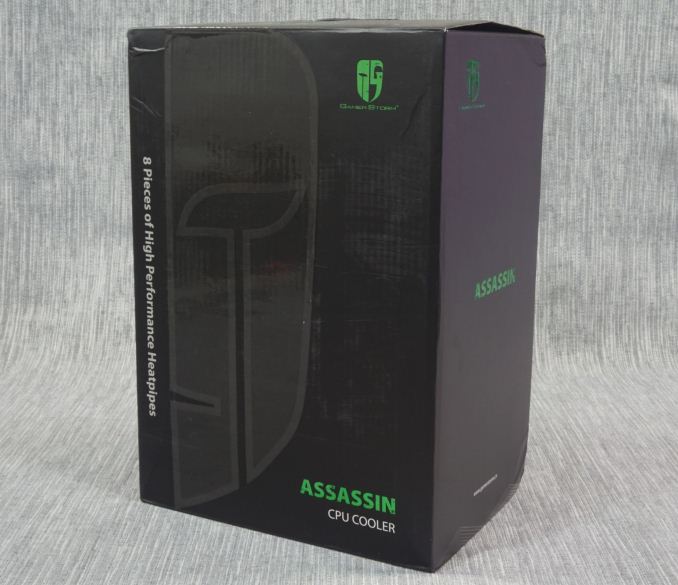
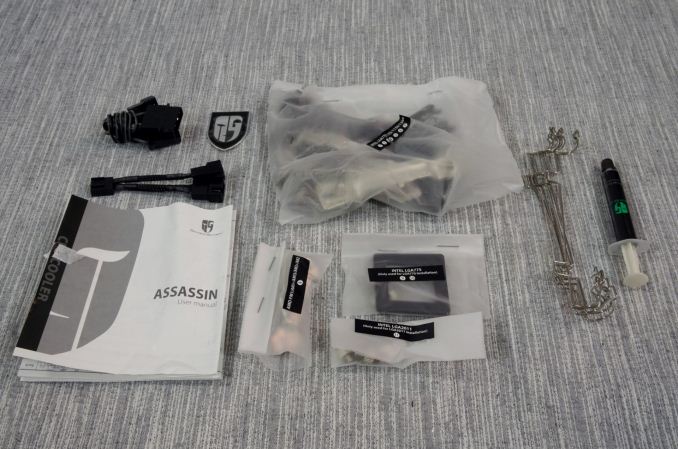
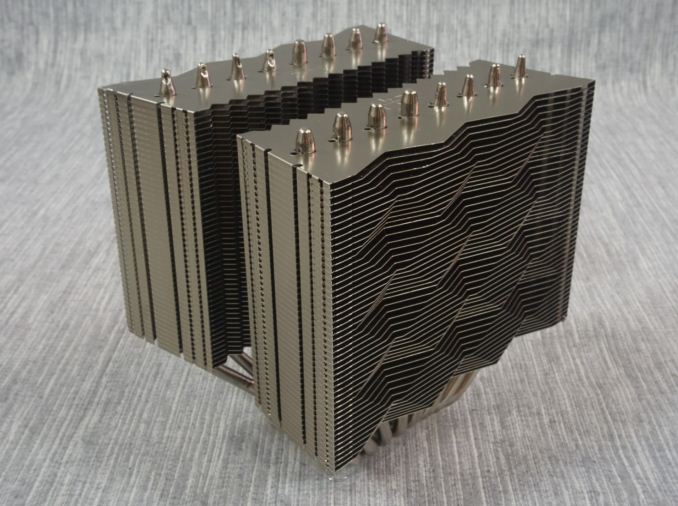
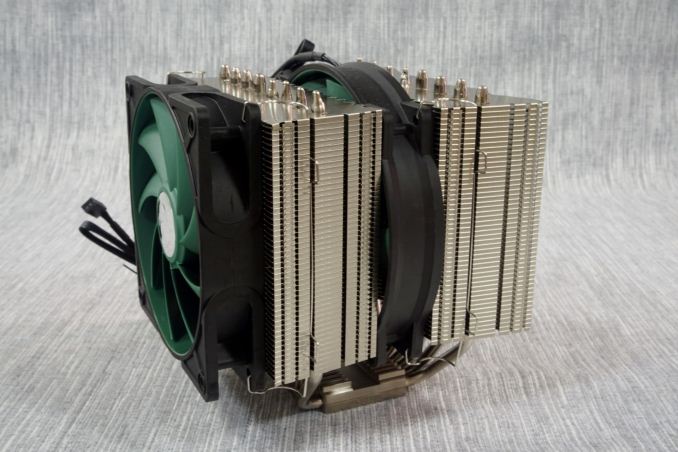
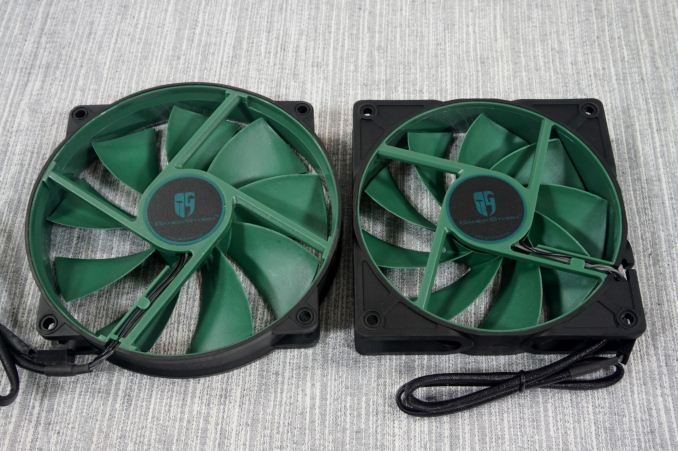









135 Comments
View All Comments
Drumsticks - Monday, July 6, 2015 - link
They did one of these round ups with the 212 Evo or + a while back, also involving high ends from Noctua (U14 and U12S I believe). They found that it doesn't quite match up, but I know it got a mention for exceptional performance for cheap. I think it falls behind more in noise than performance.It definitely would have been interesting to see it in here, but nevertheless, thanks for the review!
kmmatney - Monday, July 6, 2015 - link
I usually undervolt the fan a little - takes care iof any noise issues.Arnulf - Monday, July 6, 2015 - link
+1Nagorak - Monday, July 6, 2015 - link
I would have also liked to have a "decent" CPU cooler like that included, as well as the stock Intel/AMD HSF. It's great seeing how these coolers stack up to one another, but it doesn't truly quantify how much of an improvement you're getting over a cheap alternative, or the stock fan. For the record, I haven't run with a stock fan on any main PC I've owned in the past 15 years, but I would be curious to see how much I'm actually gaining.Araemo - Monday, July 6, 2015 - link
Especially given the raw value of the Hyper 212 Evo at $30, it may get within a degree or two of some of these for half the price or less... which is why my last build had the Hyper 212+ (It's been a few years) - I could have gained maybe 5C by spending 4 times as much.. which didn't seem worth it to me.TheJian - Tuesday, July 7, 2015 - link
AGREED. I have one, and at $29.95 from newegg just a few months ago on sale it was an AWESOME deal. i4790k can do massive oc's with it and even at full load is not terribly annoying with my 5850 causing most noise when gaming. This is still a top seller and for good reason.LittleLeo - Thursday, July 9, 2015 - link
Since its about the most popular cooler for gamers that would have been nice.jay401 - Monday, July 6, 2015 - link
I'm actually really glad to see this article, it's been ages since I've seen a good CPU air cooler roundup and sockets have changed several times over the years so it's nice to know what works well these days.jmke - Monday, July 6, 2015 - link
air cooling has plenty much run into a wall; heatpipes to copper base, aluminum fins on the heatpipes, put 140mm or 120mm fan... there is not a lot of wiggle room, so performance of those that follow this recipe is very close.differentiators now for most part are: socket compatibility, price, installation method. Raw performance/noise is no longer the focus imho if you want a successful product
meacupla - Monday, July 6, 2015 - link
It's not so much socket compatibility, so much as how compatible you can make your heatsink against mobos that have poor design choices.Although not as common on mATX and larger boards, mITX suffers a lot from this, because manufacturers attach fragile bits onto the back of the mobo, near the CPU socket, that interfere with the mounting bracket. Either that, or the CPU socket is placed too close to the PCIe, etc.
That Reeven Okeanos is something I haven't seen since Athlon 64 days, which are heatsinks paired with a stupidly loud fan. Look, if I wanted a heatsink with stupidly loud fan, I would buy an amazing heatsink or watercooler first, then attach the stupidly loud fan to that, instead of some mediocre heatsink with a mediocre fan.